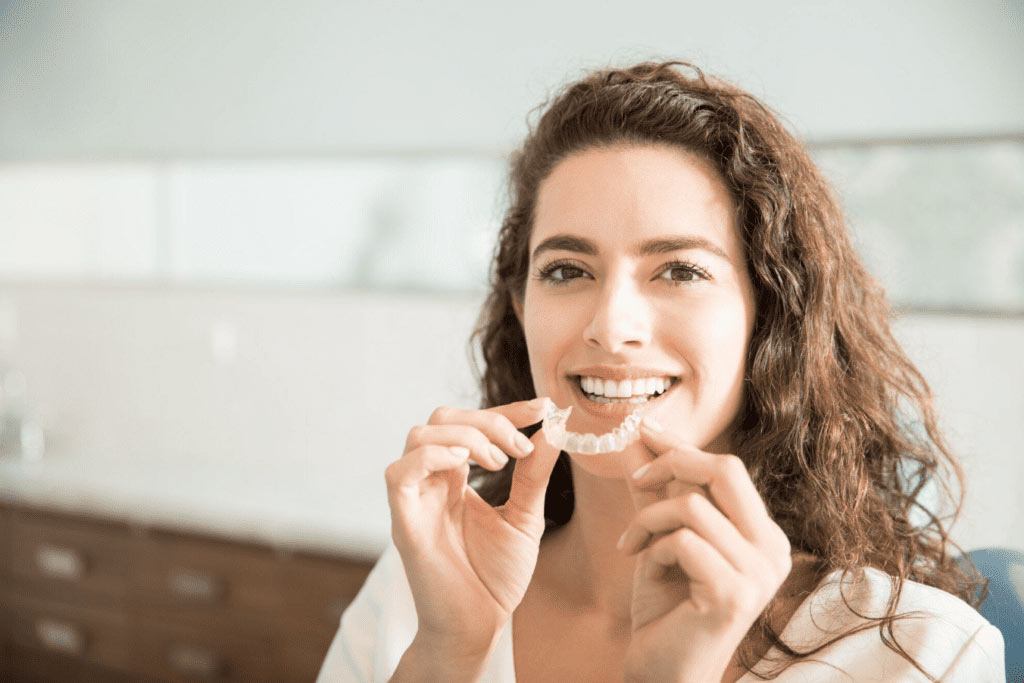February 28, 2024
Do Wisdom Teeth Cause Dental Crowding?
If you were one of the 75% of kids who needed braces to straighten their teeth, you know how nice it is to put these treatments in your rearview mirror.
Unfortunately, some adults find their crooked teeth aren’t quite as far away as they thought. This can be due to multiple different things, like not wearing your retainer. Others may say crooked, overcrowded teeth are linked to your back molars coming in.
If this sounds familiar, you likely have plenty of questions. Are wisdom teeth molars, and can they cause overcrowding? When should you start worrying and asking a dentist about removing them?
We’ve got you covered. Let’s take a look at some of the most frequently asked questions we get about molars and teeth crowding, with straightening solutions.
What Are Molars?
Let’s start with the basics: which teeth are molars, and what makes molars different from the rest of your teeth?
Your molars sit in the back of your mouth. Compared to your other teeth, they look a little larger at a glance than slimmer teeth like the front canines. Most adults will have three molar teeth in each quadrant of their mouth for a total of 12 molars.
Unlike your other teeth, molars aren’t meant for tearing or ripping food. Instead, they help you crush and grind food into smaller pieces. The bulk of your chewing happens with your molars!
Are Wisdom Teeth Molars?
Yes, wisdom teeth are sometimes called “third molars.” They come in, or “erupt,” as we grow older. While our other molars fit well in our mouths, our wisdom teeth don’t always have enough space. This is because wisdom teeth are vestigial teeth left behind by human evolution.
In the past, the human mouth was large enough to fit these teeth, which helped us chew dense roots and tough meats. As our diets became easier to chew, our ancestors’ jaws shrank in size, leaving our wisdom teeth to squeeze into a smaller amount of space!
When Do Wisdom Teeth Come In?
Your first molars come in around age six, your second molars come in around age 12, and your third molars-or wisdom teeth-come in between the ages of 17 and 21. This is why they got the nickname “wisdom teeth”: they develop as we emerge into adulthood.
However, keep in mind that not everyone gets wisdom teeth. Some of us are lucky enough to be missing one or more of these vestigial teeth! According to experts, up to 37% of people worldwide are missing at least one wisdom tooth.
Do Wisdom Teeth Cause Crowding?
As we’ve mentioned, the modern human mouth isn’t always big enough to fit our wisdom teeth. As these teeth grow in, they can sometimes squeeze their way past neighboring teeth as they surface from the gums.
However, when it comes down to wisdom teeth as a cause for teeth crowding, recent studies suggest that there is little to no correlation. The studies found in most cases, the emergence of your wisdom teeth will not exert enough pressure to cause significant crowding of the anterior teeth.
In other cases, your wisdom teeth may lack space and fail to push through your gums properly. This leads to “impacted” wisdom teeth, or teeth that are stuck in part or in full below the gums.
Impacted wisdom teeth can be painful. In this instance, extraction may be recommended. Our orthodontists can refer you to an oral surgeon for this procedure.
How Do I Fix Teeth Crowding?
While studies have debunked the myth around wisdom teeth as a cause for teeth crowding, it can still be frustrating – especially as an adult. If you’ve already undergone orthodontic treatment as a teenager, you may not want to spring for traditional braces again.
Fortunately, there are many ways to fix teeth crowding. In some cases, you may only need a retainer to preserve your smile. Otherwise, convenient and invisible solution like Invisalign is perfect for patients with minimal to moderate crowding. Traditional and ceramic braces may be ideal when more complex treatment is necessary.
Our orthodontists can assist you in selecting the most suitable treatment for your crowded teeth. They will consider your individual needs and the complexity of your situation.
Straighten Crowding The Easy Way
Now that you’ve stopped wondering, “Are wisdom teeth molars, and can they cause crooked teeth?” we hope you have a little more peace of mind. Wisdom teeth can become problematic, but modern solutions make it easy to keep them from causing too many complications with your smile. Even better, orthodontic treatments can help address whatever issues your third molars cause.
When you’re ready for effective treatment and a lasting, healthy smile, we hope you’ll trust the team at SouthShore Orthodontics. Our board-certified specialists offer comprehensive treatment plans and compassionate, friendly care. To schedule a free consultation contact us today!


